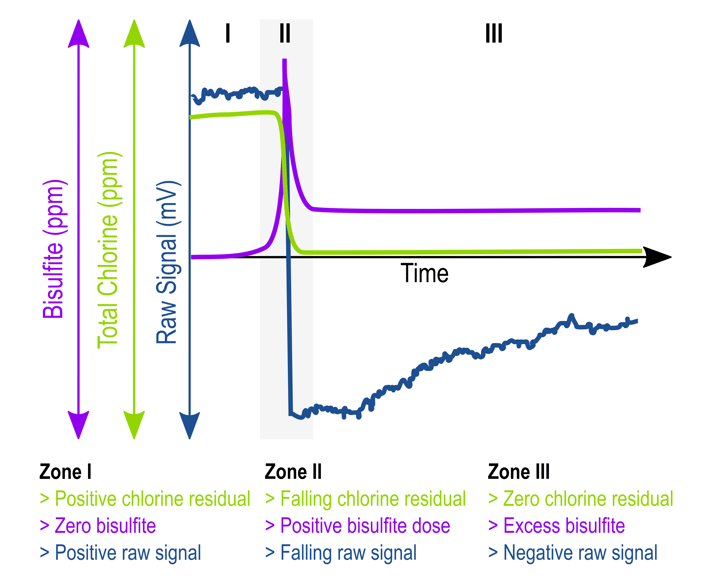Measuring Chlorine in Dechlorination Applications
Dechlorination is the removal of chlorine from water within a process before discharge. Most dechlorination systems use chemical reducing agents such as sulfur dioxide, bisulfite, or metabisulfite, which react with chlorine and convert it to chloride ions. Different regulations require a certain maximum chlorine residual of less than 0.5 ppm present before the water can be discharged to the environment.
Applications that regularly see 0 ppm disinfectant conditions have proven to be especially difficult for many measurement systems. Without disinfectant present, most applications see an increased presence of biogrowth, which covers electrodes, coats membranes, and clogs flow cells. Chemical reducing agents commonly used for dechlorination can interfere with the chlorine measurement.
Kuntze's measurement systems are designed to minimize influences caused by biogrowth. For the Zirkon® DIS probe (free chlorine) our patented ASR® automatic sensor cleaning technology can be triggered up to once a day to defend against biogrowth buildup. Both the Zirkon® DIS probe and the Zirkon® DIS Total probe (total chlorine) are robust enough to withstand manual cleaning as needed.
 The presence of reducing agents will cause the Zirkon® DIS Total probe to show a negative mV raw signal. This is normal and shows that you have a 0 ppm total chlorine residual (see the plot above). When operating at such low chlorine concentrations, it is important to understand the limitations of your reference measurement. Most reference systems are not capable of measuring less than 0.02 ppm.
The presence of reducing agents will cause the Zirkon® DIS Total probe to show a negative mV raw signal. This is normal and shows that you have a 0 ppm total chlorine residual (see the plot above). When operating at such low chlorine concentrations, it is important to understand the limitations of your reference measurement. Most reference systems are not capable of measuring less than 0.02 ppm.
